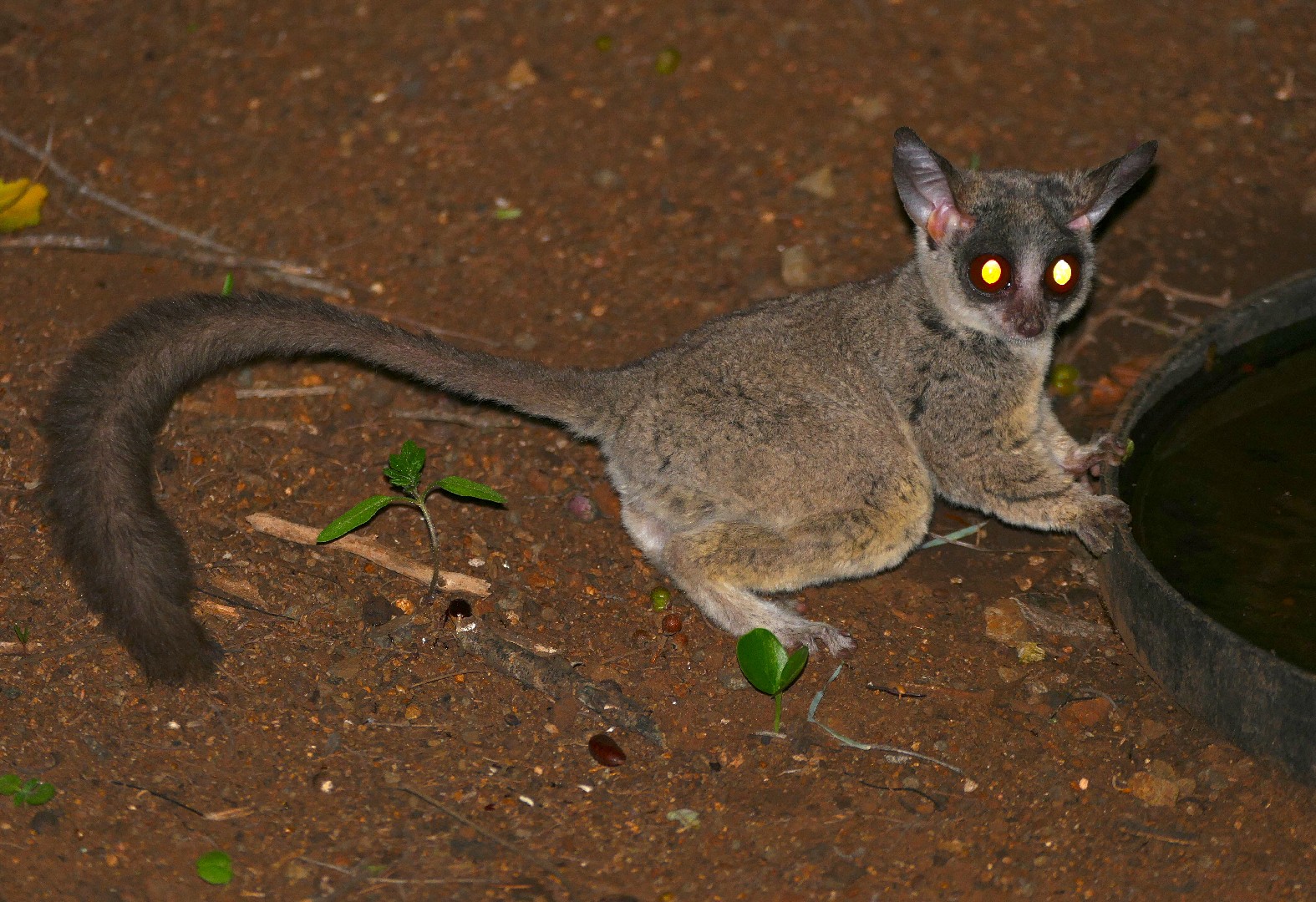Mohol bushbaby
A species of Bush babies, Also known as South african lesser galago, Mohol galago, Lesser bushbaby Scientific name : Galago moholi Genus : Bush babies
Mohol bushbaby, A species of Bush babies
Also known as:
South african lesser galago, Mohol galago, Lesser bushbaby
Scientific name: Galago moholi
Genus: Bush babies
Content
Description General Info
 Photo By Bernard DUPONT , used under CC-BY-SA-2.0 /Cropped and compressed from original
Photo By Bernard DUPONT , used under CC-BY-SA-2.0 /Cropped and compressed from original Description
The Mohol bushbaby is a medium size species with a head-and-body length of 15 cm (6 in) and a tail of 23 cm (9 in).The head is broad, with a short muzzle, orange eyes and diamond-shaped black eye-rings. The nose-stripe is whitish and the ears are large and grey. The dorsal surface of the body has a greyish-brown pelage, and the underparts are white, sometimes with a yellowish tinge. The flanks, inside of the limbs, hands and feet are yellowish. The fingers and toes have spatulate tips. The tail is darker than the rest of the fur but is not very bushy. 
General Info
Lifespan
15-25 years
Diet
Mohol bushbaby predominantly feeds on fruits, insects, and tree gum. This nocturnal species selectively eats small, soft fruits and particular insects, especially beetles and moths, alongside acquiring essential nutrients from the tree gum.
Appearance
The mohol bushbaby is a petite, nimble primate with a soft-furred, slender body. Their vibrant large eyes are a distinctive feature that accents their pale grey coat and aids in their nocturnal lifestyle. A bushy tail, nearly twice its body length, provides it with balance. There's no significant difference in appearance due to age or gender within this species.
Behavior
Mohol bushbaby is nocturnal and arboreal, adroitly moving through treetops in search of insects. It uses its large eyes and acute hearing for successful foraging at night. Typically solitary, or in small family groups, it marks territory by urinating on hands and feet to leave scent trails. Notably, it communicates through diverse vocalizations, from clicks to shrieks.
Population
Stable